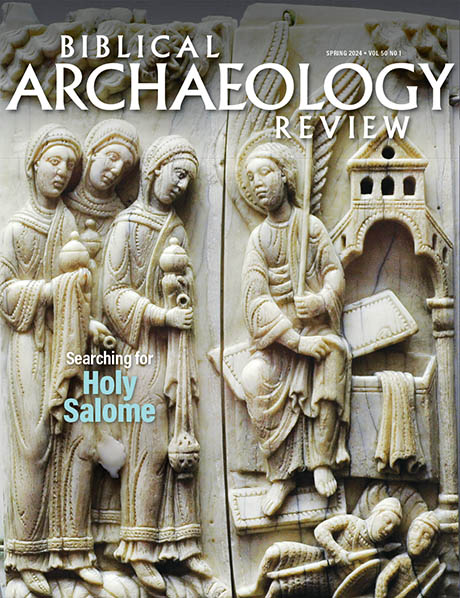Biblical Archaeology Review, Spring 2024

Features
Deep beneath the hilltop site of Horvat Qasra in the Judean foothills is a fifth-century cave chapel dedicated to St. Salome. Originally the ancestral tomb of a first-century Jewish family that owned a large agricultural estate on the hill above, the cave complex was repurposed by early Christians as a shrine to the revered saint. But who was St. Salome, and does her shrine commemorate the burial place of one of Jesus’s first disciples?
The Iron Age building recently excavated in the Givati Parking Lot section of the City of David was unique in Jerusalem’s ancient landscape. A magnificent residence and reception hall used for official ceremonies and social gatherings, it may be identified with the biblical “chamber,” reflecting the daily life of Jerusalem’s ruling elite at the end of the First Temple period.
Excavations near the City of David yielded more than 1,500 fragments of ancient ivory. Found in the ruins of Building 100, which burned down during the Babylonian destruction of Jerusalem in 586 BCE, the fragments came from plaques that adorned luxurious wooden furniture. Explore these unique finds and what they reveal about the lives of Jerusalem’s wealthiest residents.
Oriented to the east, with a broad view across the Elah Valley, the Canaanite temple at Azekah was bathed each morning in the sun’s rays. The temple’s architecture and ritual items that were found inside evidence both Levantine and Egyptian influence on local religious practice and point to Azekah’s status as a strategic, multicultural center in Late Bronze Age Canaan.
